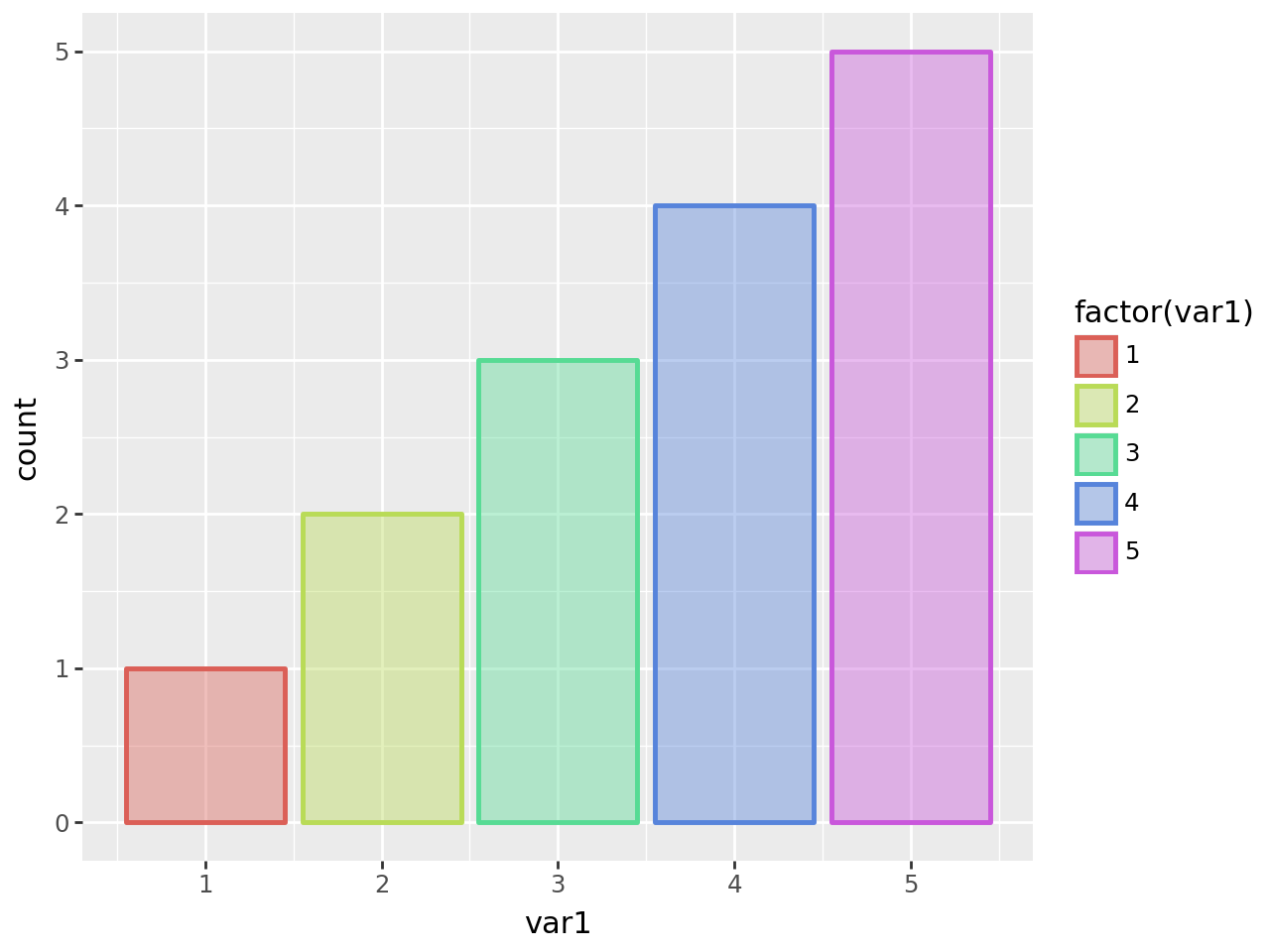Evaluate mapping after variable has been mapped to the scale
This gives the user a chance to alter the value of a variable in the final units of the scale e.g. the rgb hex color.
Examples
import pandas as pdfrom plotnine import ggplot, aes, after_scale, geom_bar, theme_classic
after_scale
The bars in geom_bar have two aesthetics that control the coloring; fill for the interior and color for the boundary/edge. Using after_scale we can create a matching combination of these two.
Start off with a mapping to the color.
= pd.DataFrame({"var1" : [1 , 2 , 2 , 3 , 3 , 3 , 4 , 4 , 4 , 4 , 5 , 5 , 5 , 5 , 5 ]})"var1" , color= "factor(var1)" ))+ geom_bar(size= 1 )
We can match the color with the fill.
"var1" , color= "factor(var1)" ))+ geom_bar(aes(fill= after_scale("color" )), size= 1 )
As after_scale takes an expression, for the fill aesthetic we can modify the color by adding to it an alpha channel i.e. '#AABBCC' to '#AABBCC66'.
"var1" , color= "factor(var1)" ))+ geom_bar(aes(fill= after_scale('color + "66"' )), size= 1 )
We rely on the fact that you can append a string to all elements of a pandas series
pd.Series(['#AABBCC', '#112233']) + '66' == pd.Series(['#AABBCC66', '#11223366'])With a fitting theme.
"var1" , color= "factor(var1)" ))+ geom_bar(aes(fill= after_scale('color + "66"' )), size= 1 )+ theme_classic()
Source: after_scale



